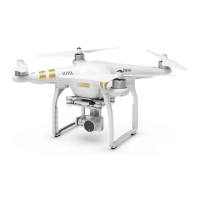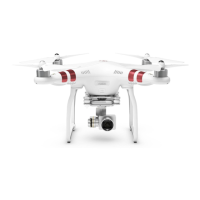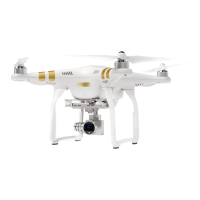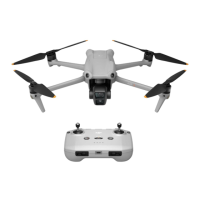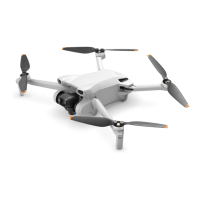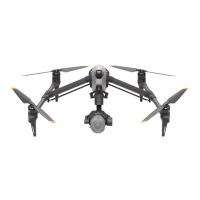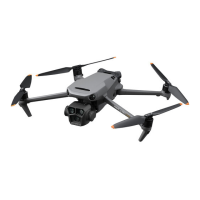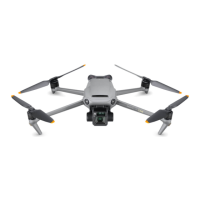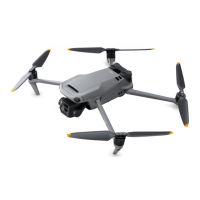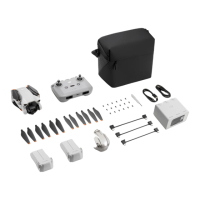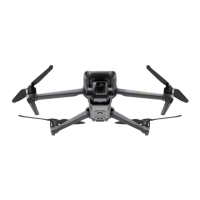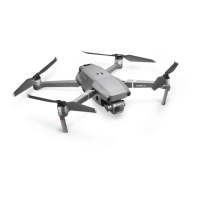©
2022 DJI All Rights Reserved.
17
DJI Mini 3 Pro
User Manual
Point has been recorded, the GNSS signal is good, and the compass is functioning normally, Failsafe
RTH will automatically activate once the remote controller signal is lost for more than three seconds.
If the aircraft is 50 m or less than 50 m from the Home Point when the remote controller signal is
lost, it will y to the Home Point at its current altitude. If the aircraft is more than 50 m from the Home
Point when the remote controller signal is lost, it will y backwards for 50 m on its original ight route,
and then enter Straight Line RTH. The aircraft will enter or remain in Straight Line RTH if the remote
controller signal is restored during RTH.
After ying backward on the original route for 50 m:
1. If the aircraft is 50 m or less than 50 m from the Home Point, it will y back to the Home Point at its
current altitude.
2. If the aircraft is further than 50 m from the Home Point and the current altitude is higher than the
preset RTH altitude, it will y back to the Home Point at its current altitude.
3. If the aircraft is further than 50 m from the Home Point and the current altitude is lower than the
preset RTH altitude, it will ascend to the preset RTH altitude and then y back to the Home Point.
Obstacle Avoidance During RTH
When the aircraft is ascending:
1. The aircraft will brake if an obstacle is sensed from the front and will fly backward until a safe
distance is reached before continuing to ascend.
2. The aircraft will brake if an obstacle is sensed from behind and will y forward until a safe distance is
reached before continuing to ascend.
3. No operation will occur when an obstacle is sensed below the aircraft.
When the aircraft is ying forward:
1. The aircraft will brake if an obstacle is sensed from the front and will fly backward until a safe
distance is reached, before ascending until there are no more obstacles in front. Then it will ascend
for two seconds before continuing to y forward.
2. No operation will occur when an obstacle is sensed from behind.
3. The aircraft will brake if an obstacle is sensed from below and will ascend until there are no more
obstacles below before ying forward.
During RTH, obstacles on either side of the aircraft cannot be detected or avoided.
The aircraft cannot return to the Home Point if the GNSS signal is weak or unavailable. The aircraft
may enter ATTI mode if the GNSS signal becomes weak or unavailable after entering Failsafe RTH.
The aircraft will hover in place for a while before landing.
It is important to set a suitable RTH altitude before each flight. Launch DJI Fly and set the RTH
altitude. In RTH, if the current altitude of the aircraft is lower than the RTH altitude, it will automatically
ascend to the RTH altitude rst. If the current altitude of the aircraft reaches or is higher than the
RTH altitude, it will y to the Home Point at its current altitude.
During RTH, the speed and altitude of the aircraft can be controlled using the remote controller if
the remote controller signal is normal. However, the aircraft cannot be shifted leftward or rightward.
When the aircraft is ascending or ying forward, push the control stick completely in the opposite
direction to exit RTH, and the aircraft will brake and hover.
GEO zones may aect the RTH. Avoid ying near GEO zones.
The aircraft may not be able to return to the Home Point when the wind speed is too high. Fly with caution.
